If there is one place that means ‘US national park’ to us, it is the Grand Canyon. We are not the only ones for whom the Grand Canyon is a must-see place – over 4.5 mil
National park entry
Your visit starts at one of the national park entrances. Seeing the warnings about long queues at the main west Tusayan entrance on the official Grand Canyon National Park Twitter, we chose to enter via the eastern entry. It’s a trick that worked for us, as there are only a couple of cars in the afternoon.

Getting around – shuttle buses
Due to the immense number of visitors, the more popular part of the park is closed to private vehicles. Convenient shuttle buses run every 10-15 minutes, stopping at major viewpoints along the South Rim trail.
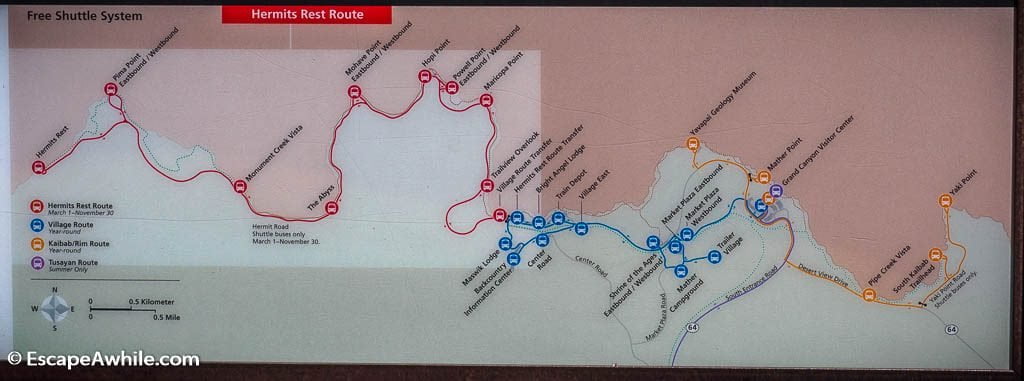
Hermits Rest Trail
In the morning, we park at one of the massive visitor center parking lots and take the red shuttle all the way to Hermit’s Rest. The idea is to walk back along the walking trail, hugging the canyon rim, jumping the longer or less scenic parts via bus.
We end up walking from Hermit’s Rest to Pima Point (1.1 mi /1.8 km) and then to Monument Creek Vista (another 1.7 mi /2.7 km).



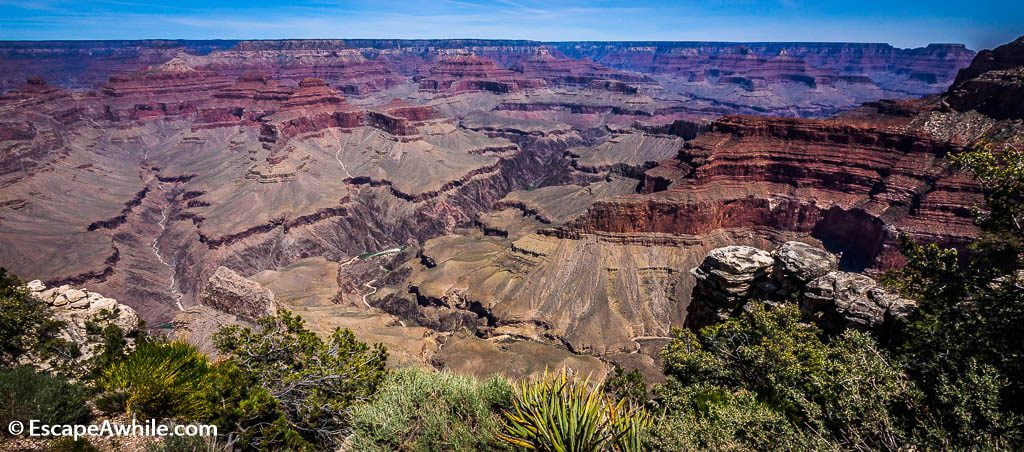

From Monument Creek, we chose to skip the 2 mi /3.2 km walk to Mohave Point on the bus. We continue our walk from Mohave Point to Hopi Point (0.8 mi /1.3 km) and further to Powell Point (0.3 mi /0.5 km).




Grand Canyon South Rim animals
As an added bonus for walking between the viewpoints, rather than just taking the bus, you will also get to see some locals.


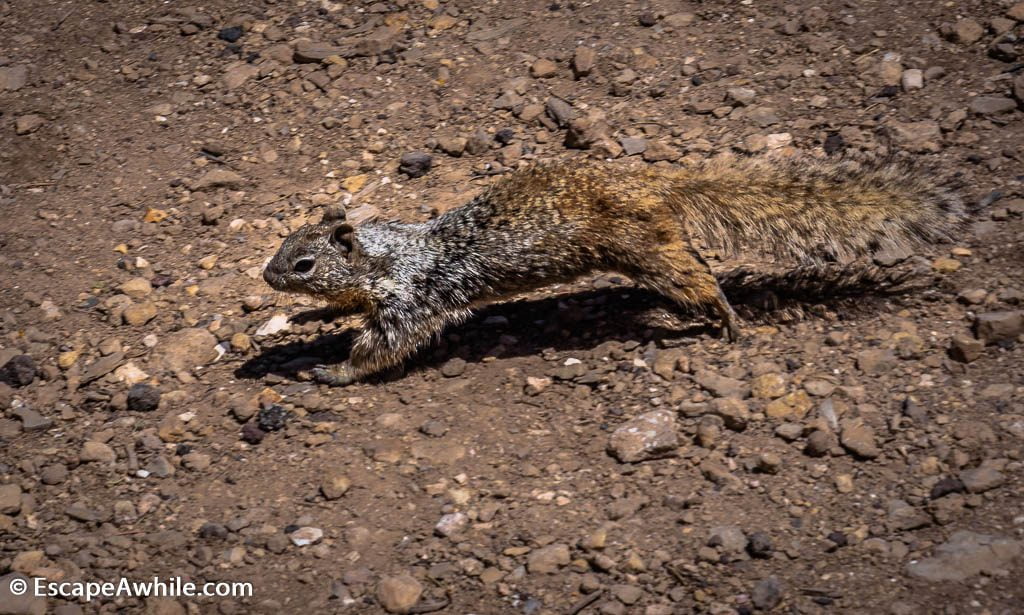


Desert View Drive – eastern viewpoints
The eastern part of the South Rim is accessible by your own car. Viewpoints are more spread out, so taking a scenic drive is your best option. Driving all the way to Desert View, you can also explore Navajo murals inside the watch tower – a pleasant change to canyon vistas.
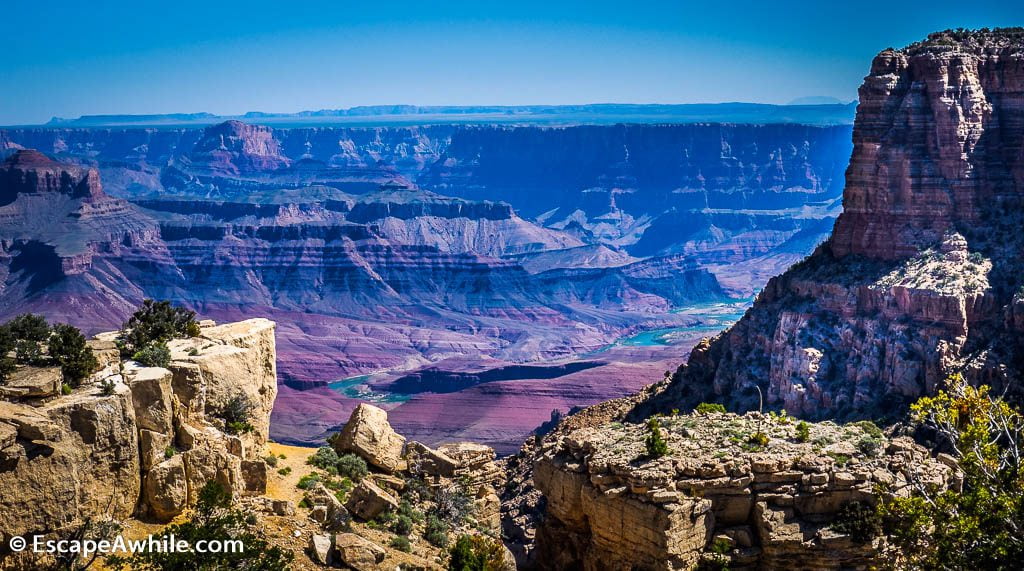


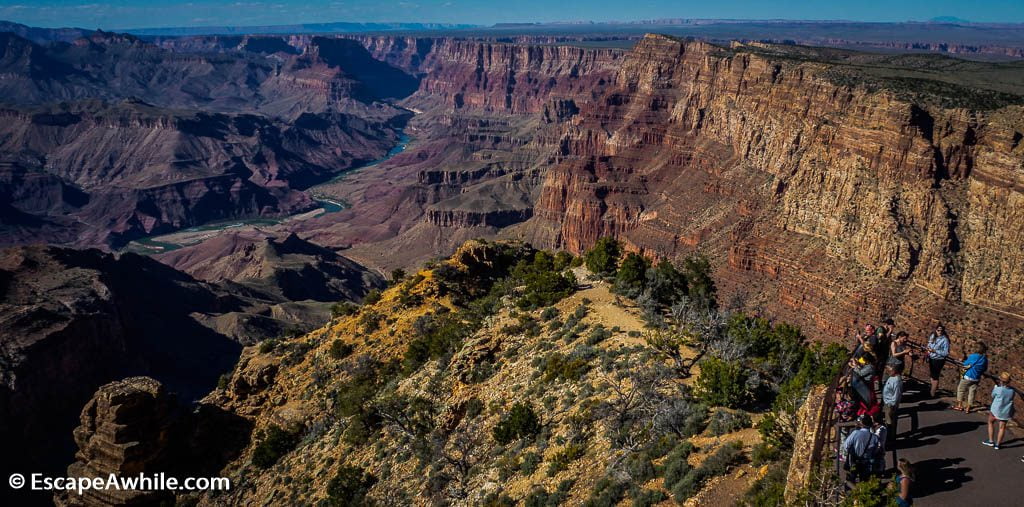
Sunrise
Any visit to the Grand Canyon would not be complete without obligatory sunrise pictures. There are many great viewpoints to choose from – but we went for the convenience. Grandview Point was a short drive from our campsite and accessible via car. That saved us 30-45 mins off the morning shuttle, better spent in bed, than on the bus.
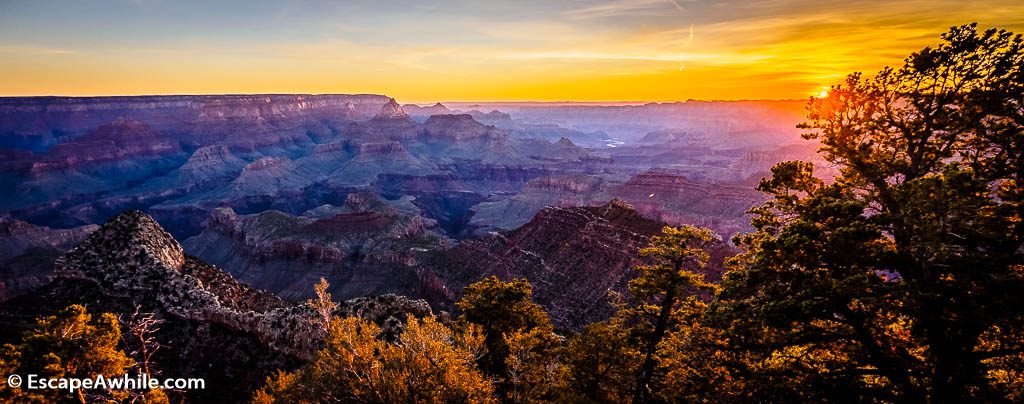
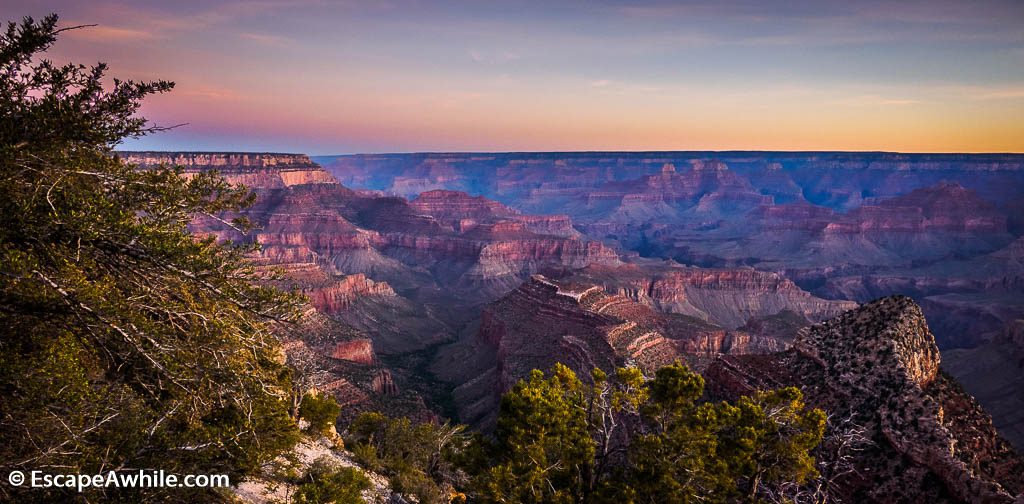
Hike into the canyon
Once you have spent a day or two exploring the Grand Canyon from the top, it is time to hike down into the canyon. There are two popular options on the South Rim: the Bright Angel Trail and the South Kaibab Trail. We chose the latter, but that is a different post.
